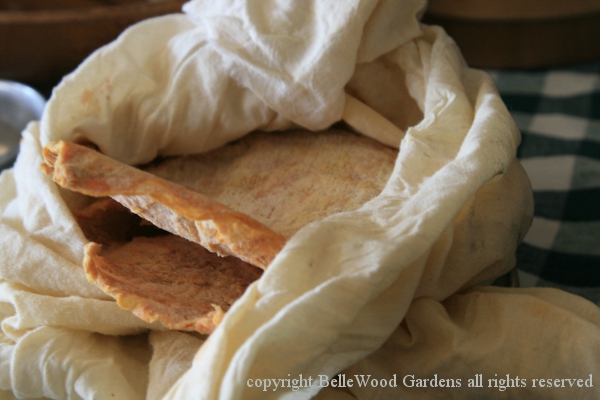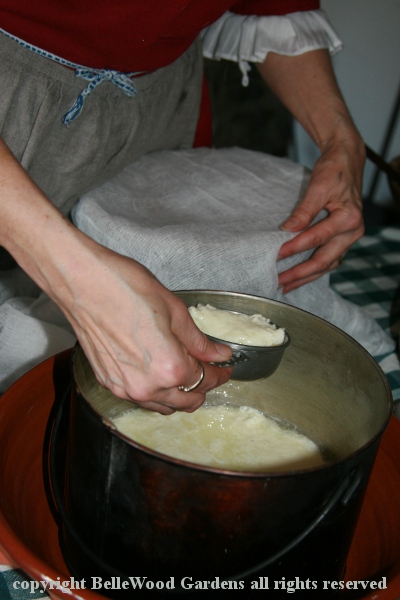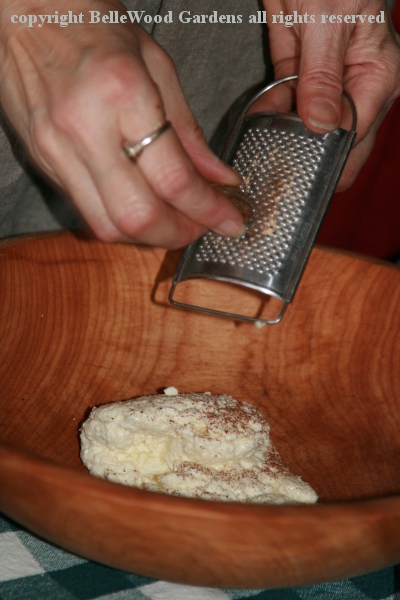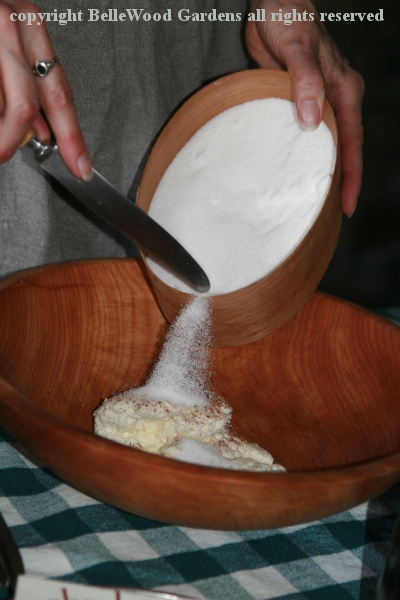
.
If you have any comments, observations, or questions about what you read here, remember you can always Contact Me
All content included on this site such as text, graphics and images is protected by U.S and international copyright law.
The compilation of all content on this site is the exclusive property of the site copyright holder.
At Bouman Stickney Museum today it was like a two-fer event. Not really though, as making butter offers an option for making fresh cheese. It's like this: back in the 18th century whole milk would be set in shallow pans, then allowed to sit so the cream could rise. The cream would be skimmed off to make butter. And the skimmed milk could be used to make fresh cheese.

The skimmed milk is poured into a pot.

It is then gently heated to somewhat below a boil.

Next the milk must be treated so it will coagulate / make curds. Rennet, made from calf's stomach is a traditional method. The stomach is salted and dried, then stored. When ready to make cheese a piece is cut off, soaked in water, and added to the hot milk. However today Connie is using vinegar.

The curds are particularly noticeable at the edge of the pot.

Gentle handling is important. Connie begins by scooping curds with a small porringer. The curds go into a wooden bowl with holes drilled in the bottom, lined with cheesecloth so the whey can drain. This is acid whey. It can actually, in turn, be used to make cheese - ricotta is made from whey. Or used in baking bread or muffins, any recipe that calls for milk. But in the 18th century whey was often fed to pigs and chickens, and still can be today..

Then she uses a pierced, shallow ladle.

Well drained, the cheese is now a soft mound.

The receipt she is using calls for freshly grated nutmeg

and sugar. The cheese is somewhat tart from the vinegar.
Another option mentions sage.

Very pleasant, not at all sweet, much like paneer
And simple enough to do at home - now there's a thought . . . .
Back to Top
Back to March 2016
Back to the main Diary Page